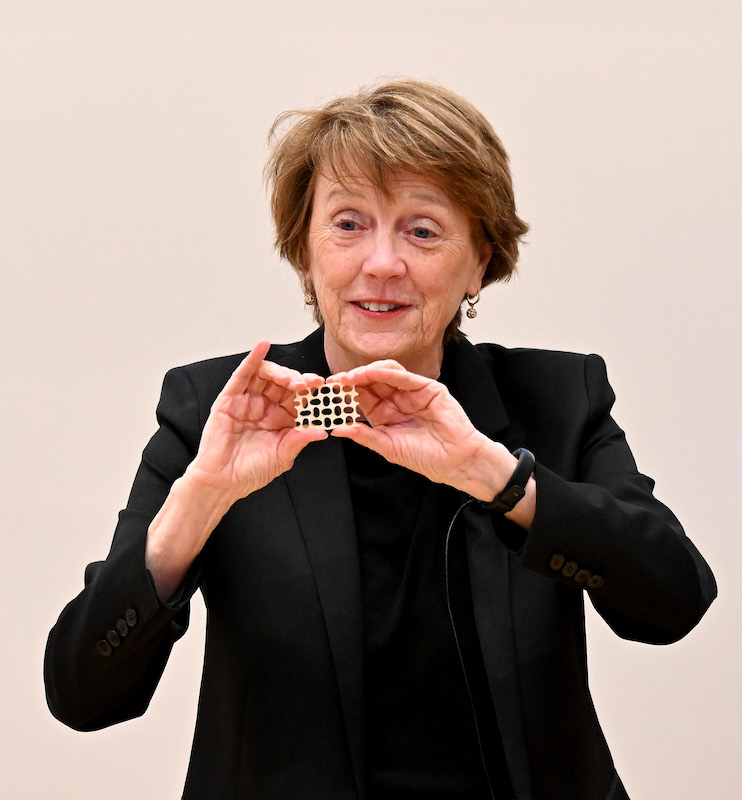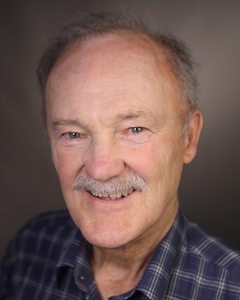
Mechanical Properties of Lithiated Silicon: A Candidate Electrode for Lithium Ion Batteries
April 5, 2023
Dr. William D. Nix
Professor Emeritus
Materials Science and Engineering
Stanford University
Abstract:
Understanding the insertion of lithium into silicon electrodes for high capacity lithium-ion batteries is likely to have benefits for mobile energy storage, for both electronics and transportation. Silicon nanostructures have proven to be attractive candidates for electrodes because they provide less constraint on the volume changes that occur and more resistance to fracture during lithium insertion. But still, facture can occur even in nanostructured silicon. Here, we consider the fracture of Si nanopillars during lithiation and find surprising results. We find that fracture is initiated at the surfaces of the crystalline nanopillars and not in the interior, as had been predicted by analyses based on diffusion-induced stresses. In situ transmission electron microscopy observations of initially crystalline Si nanoparticles shows that lithiation occurs by the growth of an amorphous lithiated shell, subjected to tension, at the expense of a crystalline Si core, subjected to compression. We also show that the expansion of the nanopillars is highly anisotropic and that the fracture locations are also anisotropic. In addition, we find a critical fracture diameter for initially crystalline nanopillars of about 300nm that appears to depend on the electrochemical reaction rate. Modeling the stress evolution in Si nanopillars during lithiation provides a way to understand and control these failure processes. Also, we show that initially amorphous Si nanopillars are much more resistant to failure, having much larger critical fracture diameters, because the initial stresses at the surface are compressive in this situation compared to tension in the case of initially crystalline nanopillars. For sufficiently big amorphous Si nanopillars, cracking is expected to be initiated in the interior based on diffusion-induced stresses, but we have not yet observed this kind of fracture. The modeling we, and others, have done has been based largely on estimates or guesses about the mechanical properties of lithiated Si. Recent nanoindentation experiments show that the elastic modulus and hardness of lithiated amorphous Si depend strongly on the lithium content and also show very significant creep effects. These more subtle effects may need to be included in future modeling. It is hoped that these studies will be useful in the design of silicon electrodes for advanced battery systems.
Bio:
Professor Nix obtained his B.S. degree in Metallurgical Engineering from San Jose State College, and his M.S. and Ph.D. degrees in Metallurgical Engineering and Materials Science, respectively, from Stanford University. He joined the faculty at Stanford in 1963 and was appointed Professor in 1972. He was named the Lee Otterson Professor of Engineering at Stanford University in 1989 and served as Chairman of the Department of Materials Science and Engineering from 1991 to 1996. He became Professor Emeritus in 2003. In 2001 he was awarded an Honorary Doctor of Engineering Degree by the Colorado School of Mines and in 2007 an honorary degree of Doctor of Engineering by the University of Illinois. He received an honorary degree of Doctor of Science from Northwestern University in 2012.
In 1964 Professor Nix received the Western Electric Fund Award for Excellence in Engineering Instruction, and in 1970, the Bradley Stoughton Teaching Award of ASM. He received the 1979 Champion Herbert Mathewson Award and in 1988 was the Institute of Metals Lecturer and recipient of the Robert Franklin Mehl Award of the Metallurgical Society (TMS). In 1995 he received the Educator Award from TMS. He was selected by ASM International to give the 1989 Edward DeMille Campbell Memorial Lecture and in 1998 received the ASM Gold Medal. He gave the Alpha Sigma Mu Lecture to ASM in 2000 and received the Albert Easton White Distinguished Teacher Award in 2002 and the Albert Sauveur Achievement Award in 2003, both from ASM. He also received a Distinguished Alumnus Award from San Jose State University in 1980. In 1993 he received the Acta Metallurgica Gold Medal and in 2001 he received the Nadai Medal from the American Society of Mechanical Engineers. He was elected Fellow of the American Society for Metals in 1978, Fellow of the Metallurgical Society of AIME in 1988 and Fellow of the Materials Research Society in 2011. He received the von Hippel Award from the Materials Research Society in 2007 and in 2011 was awarded the Heyn Medal of the German Society of Materials Science. He received the national Monie A. Ferst Award from Sigma Xi in 2017. TMS/AIME has established the William D. Nix Award and Lecture, which is given annually, in parallel with the Mehl and HumeRothery lectures. In 1987 he was elected to the National Academy of Engineering and in 2002 was elected as a Fellow of the American Academy of Arts and Sciences. Prof. Nix was elected to the National Academy of Sciences in 2003.
Professor Nix has been engaged in research on the mechanical properties of solids. He has been principally concerned with the relation between structure and mechanical properties of materials in both thin film and bulk form. He is co-author of 500 publications in these and related fields and has trained 79 Ph.D. students in these subjects in his years at Stanford. Professor Nix has taught courses on dislocation theory and mechanical properties of materials. He is co-author of "The Principles of Engineering Materials", published in 1973 by Prentice-Hall, Incorporated, and has published a textbook entitled “Imperfections in Crystalline Solids,” with Wei Cai of Stanford, with Cambridge University Press. In 2019 he published “A Century of Materials Science and Engineering at Stanford” to celebrate the centennial of the Stanford MSE department in that year. During the pandemic he published “Living an American Dream – a Biographical Memoir.” Both recent books were published by Amazon and can be found on the Amazon website.


